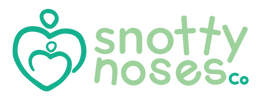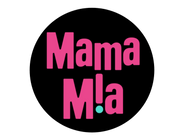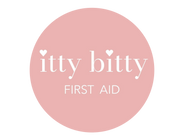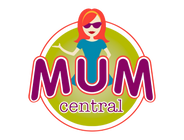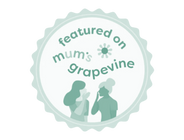March 14 is World Sleep Day. Let me tell you a little story about a secret sleep tip.
When exhausted parents reach out to us for sleep advice and product recommendations, there are 2 main questions we ask.
1. How old is your little one?
2. How long is their "wake window"?

We were reminded of the importance of "wake windows" this week, when we received a lovely review from Anna T, from Canberra.
"I am sending you guys a virtual hug of total gratitude, and will be forever thankful that I clicked on your Facebook ad for the sleep vaporiser. The next day I rang to ask you a bit more about the product for my 5 month old, and you talked about "wake windows", and how the Hush Sleep Vaporiser could assist.
I had done a lot of reading about baby sleep before having Xavier, but had never heard of "wake windows" before. It was a total game-changer. We had been keeping him up too long for his age, in hopes he would then sleep better, but it backfired.
The wake window based on his age was spot on, and he's now having 3 naps a day, which leads to a much better night sleep. And now my husband and I feel alive again, and not like sleep deprived zombies. Thanks a million"
What Is A Wake Window?
Our sleep partners at Little Ones Agency state that "wake window" means how much awake time are they giving their child during the day (which includes feeding and play time) before offering a nap or bedtime. All too often, these awake windows are much too long.
A "wake window" changes many times throughout the first 18 months of life.
What is appropriate for a newborn, is different to a 6 week old. It's different again for a 7 month old. Then it changes again around 13 months. No wonder parents can feel confused.
But understanding "wake windows" can empower parents to feel more in tune with their baby's needs. It also helps them feel more in control and confident of how each day (and night) will roll.
Why Are Wake Windows Important?
Knowing the right wake window based on your baby’s age means they will be less likely to get overtired and be difficult to settle. Nor will they be undertired and equally difficult to settle.
Often parents will keep their baby up, so they will be super tired and sleep well. But in young children this strategy backfires, as little ones get overtired, the cortisol stress hormone builds up in their brain, and their sleep pattern is worse.
Wake windows help parents have more structure and predictability to their day. And a good pattern of day sleep leads into a better night sleep.
Do Wake Windows Involve Crying?
The words "sleep training" and "cry-it-out" are very loaded words. There are a lot of negative and archaic images that come to mind. They have very regimented connotations of strict rules involving extended crying and methods of deprivation.
Wake windows are completely different. They are a safe and loving way to be in-tune with your baby, and can actually prevent the crying that comes from being undertired or overtired.
Every family has their personal preference when it comes to parenting and sleep routines. There are good days when everything runs smoothly and other days when it's a complete mess. They are babies after all, not robots.
Wake windows are gentle, flexible sleep plans and can suit any style of parenting.

Wake Guidelines
General age-appropriate wake windows for daytime are:
Newborn - 6 weeks: 45-75 mins
6 weeks - 3 months: 60-90 mins
3 months - 6 months: 1.5 - 2.5 hours
6 months - 9 months: 2.5 -3 hours (usually 2 daytime naps)
9 months - 13 months: 2.5 - 4 hours ( first nap longer than 2nd nap)
13 months - 18 months: 4.5 6 hours (consolidating to 1 midday nap)
18 months - 3 years: Continue to offer a nap with 5-6 hours of awake time. Your child is usually ready to drop the nap altogether between 3-4 years old. It’s still important to offer a “quiet time” until they are able to go from morning wakeup to bedtime without major meltdowns. It’s also wonderful for parents and caregivers to have some downtime in the middle of the day, too.
Sleep Props
At any age, gentle, consistent, independent sleep cues can really help:
1. Swaddle your baby (under 6 months) to keep them cosy and warm and to control their startle reflex.
2. Offer a soft cuddle blankie/toy from 6 months+, as little ones are comforted by the touch and smell of bedtime blankie, and will come to associate it with sleep.
3. Keep the room dark, from daylight with block out blinds, and use a soft, deep red light, to stimulate melatonin production (the sleep hormone).
4. “Brown Noise” - wait I thought 'white noise' was the buzz word for baby sleep? White noise is the most common sleep sound recommended by sleep consultants worldwide. However, it's quite a tinny, high frequency, which can be irritating.
A new, lower frequency sound trend is emerging: "brown noise". This consistent, low frequency, deep rumble sound, played at around 60 decibels, helps babies and children fall into a deep sleep, and transition between sleep cycles (around 45 minutes). Babies are not used to silence, as they have just come from a womb that is constantly noisy, with heartbeats, fluid sounds, and even voices from outside. The “brown noise” is comforting and babies and older children quickly come to associate the sound with sleep.
HOT TIP: Did you know 'brown noise' for adult sleep is trending on Tik Tok?
A Great Sleep Tool
HUSH is an 8-in-1, ultrasonic sleep vaporiser, that features humidifying mist, deep red light (to stimulate melatonin sleep hormone) brown noise/rainfall/heartbeat sounds built in, plus bluetooth connectivity with remote control.
Customise each feature to suit, or use them all.
It is safe to use as a sleep support from birth.

Step By Step "Newborn" Day Guide
If the idea of using "wake windows" is appealing, here is a more comprehensive guideline for newborns:
The appropriate wake window for a newborn is generally 60 minutes. Certainly no more than 75 minutes. So if they wake at 6am, they will have a full feed straight away which can take 20-40 minutes in those early weeks, but will ensure bub is getting that high fat, filly hind milk (if breastfeeding).
Some newborns are really sleepy on the breast in those early weeks, especially if they are swaddled and super warm. So you might need to take off a layer of clothing and use a cool face washer on their feet and hands to keep them suckling. Then after they have finished feeding, they will have energy to have a bit of wake time.
Wake time or "play time" might mean just staring at your face while you talk or sing to them. Show them around the house or read a book (newborns love graphic black and white pictures). Then they could have some floor time/tummy time – great to pump out extra wind, and get that neck, leg and arm strength. Then by 6.55am, they will start to become tired. Change their nappy, swaddle them, give them a final burp to expel any wind and it’ back into the cot or cradle.
Can Babies Sleep Too Much?
In the first 8 weeks most babies nap quite well, as they are still very sleepy and recovering from the birth. Their sleep cycles are very immature. If they are not hungry and don’t have wind, they can easily stay asleep for hours and hours.
And while this sounds amazing, it can be problematic. If a newborn or older baby “banks” too much day sleep (particularly late in the afternoon) they are going to be like a nocturnal possum, and want to party all night.
What Happens to Wake Windows At Night?
Newborns need to feed overnight, but these night feeds are just structured as a feed, burp, nappy change cycle, and then bub goes straight back into the cot. “Play time” is not part of the night time cycle. This helps your bub start to learn the difference between day and night, and helps baby become a good day napper, which leads to more settled nights.
As babies sleep cycles mature, and they consume more calories during the day, their need to wake and feed at night reduces. So around 6 months, night waking for feeding reduces and babies and toddlers are able to sleep 11-12 hours at night.

More Assistance
As mentioned, we are proud to empower and support parents in their parenting journey. Good sleep is good for baby, and a sanity saver for parents. HUSH is a comprehensive, yet simple sleep tool.
Remember, plain tap water can be used to create the purified mist for newborns to 3 months. After 3 months, a few drops of 100% pure, botanical essential oil can be added to the water, containing organic botanical ingredients of lavender, chamomile, orange and sandalwood.
Need more help? Email us at hello@snottynoses.com.au or reach out via Instagram or Facebook.
Much love and sleep,
Laura and the team, Brisbane x
Congested Babies Can't Breathe or Sleep Well. Snotty Boss can help....
Disclaimer: We are not doctors or healthcare professionals or aromatherapists. Our products are offered for sale with general use guidelines provided by the manufacturer. Should any sensitivity to our products occur, please discontinue use. Our products are not intended to diagnose, treat, and/or take the place of medical treatment prescribed by a doctor or medical professional.

